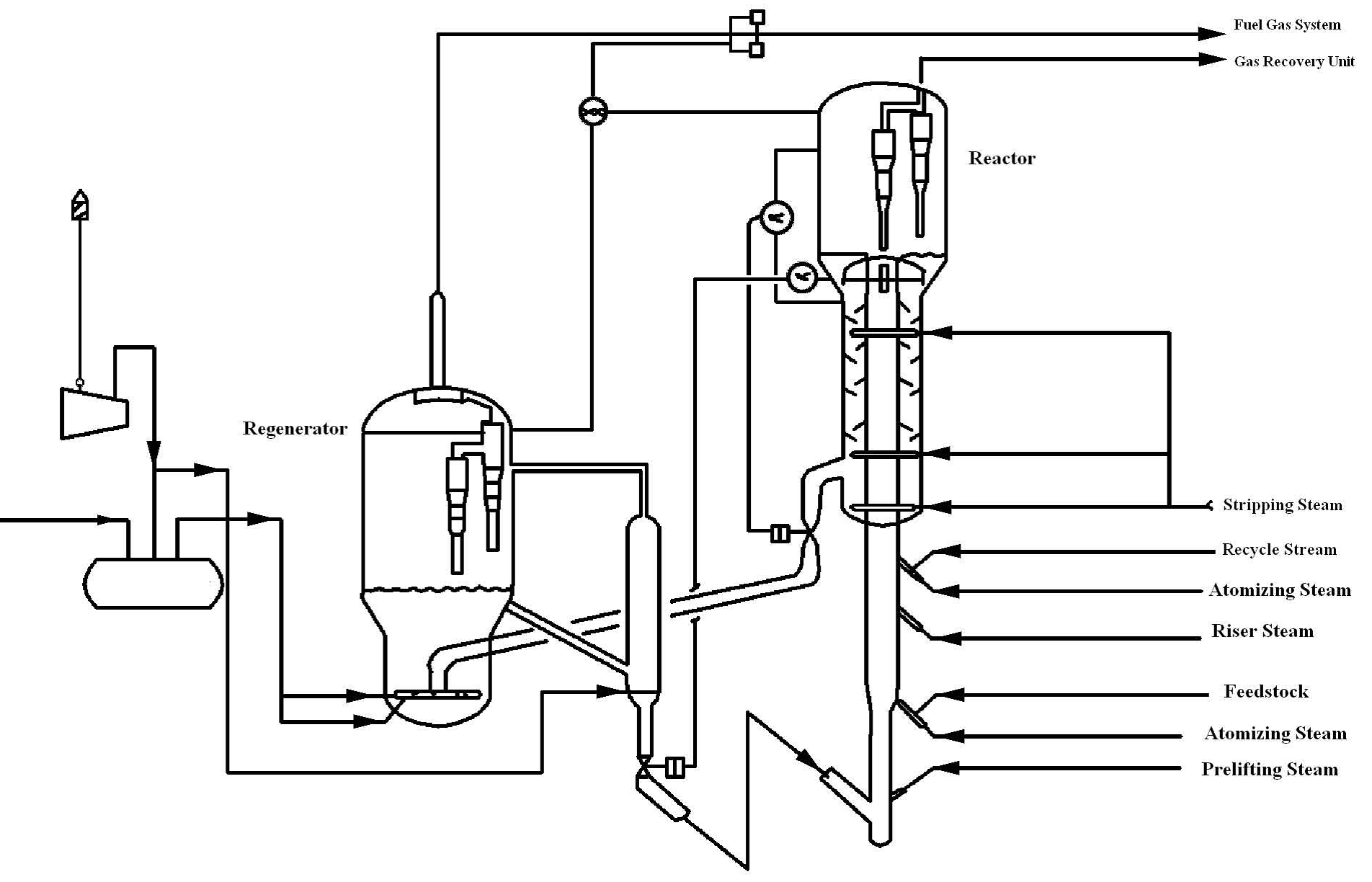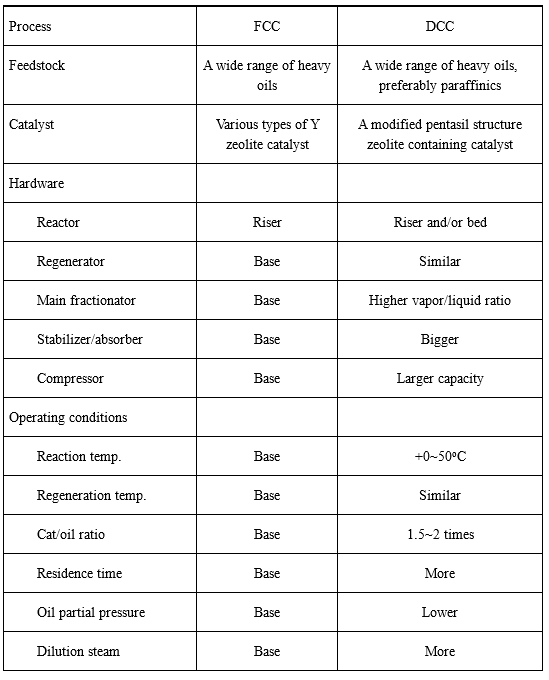1 Introduction
1. Background
DCC, a novel process using various heavy feeds aiming at propylene production derived from the petrochemical extension of FCC (Fluid Catalytic Cracking),was firstly chosen & published in ‘Refining Processes Handbook’ pressed by Hydrocarbon Processing’s edition team in 1990’s. Up to now, DCC has been commercially proved as the advanced technology with the highest propylene yield from heavy feedstocks, which is ranking in the leading position in the world. With breaking the limitation of conventional FCC process, DCC technology can typically produce times of light olefin yields, such as ethylene & propylene etc. than that of conventional FCC, and generate high octane number naphtha containing more aromatics at the same time.
2. Process scheme
The process scheme of DCC, shown in Fig. 1, is similar to that of FCC consisting of reaction-regeneration, fractionation and absorption and stabilization sections. Feedstock dispersed with steam is fed to the system, then contacted with the hot regenerated catalyst either in a riser plus fluidized bed (DCC-I Mode for maximum propylene operation) or in a riser (DCC-II mode for maximum isoolefin & gasoline operation) to take place the catalytical reaction. Reactor effluent proceeds to a fractionator for separation. The coke deposited catalyst is stripped with steam and transferred to a regenerator where air is introduced and the coke on the catalyst is removed by combustion. The hot regenerated catalyst is returned to the reactor at a controlled circulation rate to achieve the heat balance of the system.

Fig. 1 DCC Process Scheme
3. Key operating parameters
Table 1 lists the main features of DCC in comparison with FCC.
Currently, the commercial and typical DCC technology can be categorized to DCC-I (maximum propylene operation) and DCC-II (maximum isoolefin & gasoline). Besides feedstock property and catalyst, the main operating parameters of DCC-I and DCC-II are reaction temperature, residence time, catalyst to oil ratio, and steam dilution. The reaction temperatures of DCC-I and DCC-II are around 560℃and 530℃ respectively. DCC uses longer residence time to enable the cracked naphtha to proceed secondary reaction for forming light olefins. The heat of reaction of DCC is two to three times of that of FCC due to the high conversion and large quantity of gas produced, resulting in a higher catalyst circulation rate and higher catalyst to oil ratio to provide the heat of reaction. High yields of the desired olefins are favored by low oil partial pressure. It encourages higher gas olefinicity and decreases the coke formation. DCC needs more steam than FCC but still much less than in steam cracking.
Table 1 General comparison between DCC and FCC

2 Technology characteristics
1. Operation flexibility
DCC-I Mode (for maximum propylene operation) and DCC-II Mode (for maximum isoolefin & gasoline) can be smoothly shifted in any DCC commercial unit.
2. Feedstock adaptibility
DCC can process various types of heavy feeds. The following feeds have been applied in the commercial DCC units: VGO, hydrotreated VGO, hydrogen cracking bottoms(HCB), deasphalted oil(DAO), coker gas oil(CGO), atmospheric residue(AR), hydrotreated AR and Blending of VGO and VTB, etc. The more favorite products distribution can be obtained when the paraffinic base feedstock is adopted.
3. Main performances
Daqing paraffinic feedstock showed the highest propylene yields of 24.83wt% for DCC-I, while the propylene yield was 14.57wt% for DCC-II operation with a naphtha yield of 35.72wt%.
DCC naphtha is rich in BTX especially toluene and xylenes. The total BTX in the narrow cut was 57.56vol%, 21.87vol% and 30.33vol% respectively. The concentration is high enough to be utilized as BTX plant feed.
4. Running period
Running period of DCC unit is normally around 3-5years, the same as FCC unit.
3 DCC catalysts
A series of DCC catalysts for different DCC types and feedstocks have been formulated and commercially available. The new generation DCC catalyst has been put into application on several commercial DCCUs, and resulted in higher propylene selectivity, higher propylene yield, and less impurities contents than the former ones. The specifications of DCC catalyst is listed in Table 2.
Table 2 DCC Catalyst specifications

4 DCC Commercial Practices
Twenty-two DCC units have been licensed to China and overseas market such as Thailand, Saudi Arabia and India etc. Another four DCC units are under design and construction. The capacity of the biggest one is 4.60 MMT/a.
